Ancient Kyoto
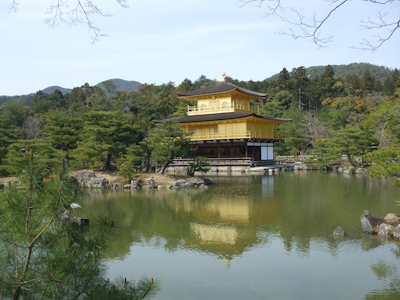
The Historic Monuments of Ancient Kyoto (Kyoto, Uji and Otsu Cities) formed the center of Japanese culture for a thousand years.
Kyoto was the imperial capital of Japan from 794 to 1869. Its wealth and importance are reflected in the religious wooden architecture and the landscaped gardens. Especially its garden architecture has had a profound influence worldwide.
Community Perspective: opinions differ about which temple is the ‘best’, although Byôdô-in Uji and the Golden Temple are often named. Every temple also has a spectacular garden and Kyoto overall is a perfect introduction to Japanese culture, architecture and food. Consider renting a bike if you want to do a fair number of the 17 inscribed sites in a day.
Australian Fossil Mammal Sites
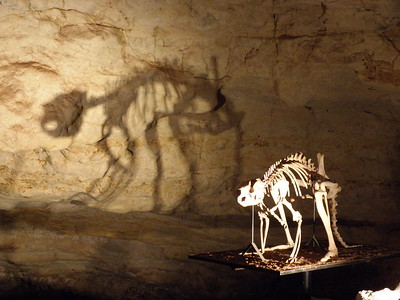
The Australian Fossil Mammal Sites Riversleigh and the Naracoorte are superb illustrations of the key stages of the isolated evolution of Australia's unique fauna.
Riversleigh has fossil remains of ancient mammals, birds, and reptiles of the Oligocene and Miocene ages, when the habitat changed from humid rainforest to dry forest. The Naracoorte Caves are more recent. Here, holes opened up creating traps for the unwary mammals and other land creatures. Fossils include those of Australian ice age megafauna.
Community Perspective: Almost all reviewers visited Naracoorte, which is the most accessible in southern Australia. The focus here is on Victoria Fossil Cave, for which you need to take part in an (educational) guided tour. John has covered Riversleigh as well.
Bwindi Impenetrable National Park
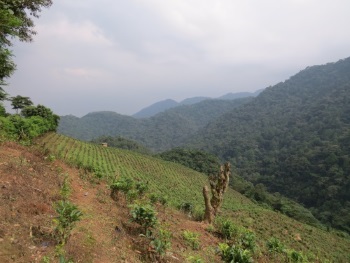
Bwindi Impenetrable National Park protects a floristically diverse tropical rainforest, inhabited by almost half the world's population of mountain gorillas.
The property is a remnant of a much larger forest, and lies at the intersection of three ecological zones. Due to its altitudinal range of 1,160-2,706m it has exceptional diversity and richness in species, notably regarding trees, butterflies and birds.
Community Perspective: Bwindi is the most accessible place to see mountain gorillas, and several access points provide 1-hr visits to habituated groups of gorillas. It can be a tough hike to reach them.
Canaima National Park
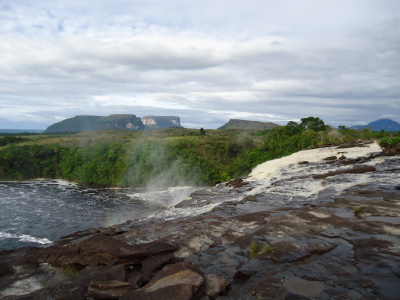
Canaima National Park is renowned for its beautiful tepui landscape and the world’s highest waterfall, Angel Falls.
The tepuis (table mountains) form a unique biotic environment, with very poor soil on their summits and specific flora that has adapted to these circumstances. They also have an important story to tell about Earth’s evolutionary history as its surface holds some of the oldest rocks on the planet and the geology provides evidence that South America and Africa once formed part of a single continent.
Community Perspective: Angel Falls is the main tourist focus here, and all 3 reviewers so far focused on it. Both the approach by land and air are deemed wonderful experiences and the “drop from the top of the tepui is mesmerizing”. The last review dates from 2010, so for practical information look elsewhere for more recent sources.
Church of the Ascension, Kolomenskoye
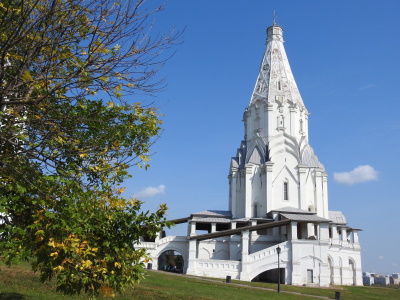
The Church of the Ascension in Kolomenskoye represents an innovative design in the architecture of Russian Orthodox churches.
It is one of the first stone churches in that tradition with a tent roof. The tower rises 41 meters from an octagonal base. The church dates from 1532 and was built in honor of the birth of a prince who later became known as Tsar Ivan the Terrible.
Community Perspective: An easy one, as it lies in a suburb of Moscow and is accessible by the metro. The WHS is only that one big white church (and the interior isn’t that notable), but it is worth it to explore Kolomenskoye Park overall.
City of Luxembourg
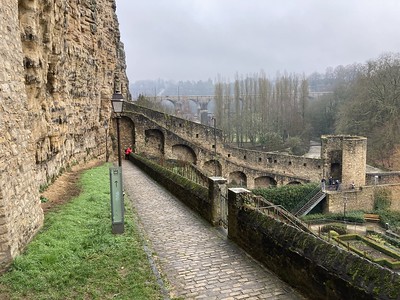
City of Luxembourg: its Old Quarters and Fortifications includes the remains of a fortified city that played an important role in European history for centuries.
The rocky environment provides a natural fortress, which has been further fortified over the 17th, 18th and 19th centuries by Spanish, Austrian, French, and Prussian rulers. The majority of the fortifications were demolished after 1867, but many of the gates, forts, bastions, redoubts and casemates remain visible.
Community Perspective: while US/UK reviewers seem to fall in love with its “almost perfect” setting, cobbled streets, and Christmas markets incorporated within the military vestiges, those of neighbouring countries find it “somewhat dull”. Be aware that its core zone covers a really small part of the city.
Donana National Park
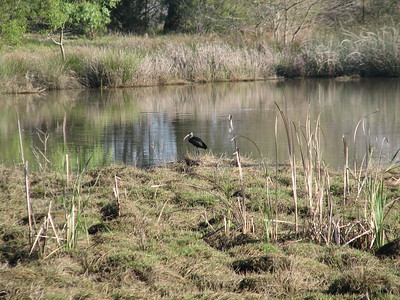
Doñana National Park comprises wetland and coastal ecosystems that are a major attraction for migrating birds.
The park covers a highly diverse area of lagoons, marshes, shallow streams, and sand dunes in the delta where the Guadalquivir River flows into the Atlantic Ocean. It’s one of the largest breeding grounds for herons in the Mediterranean and its wintering waterfowl number over 500.000. The terrestrial parts are a major habitat of the Iberian Lynx.
Community Perspective: What is and isn’t included in the core zone is a bit vague; Solivagant has tried to make it clear. Anyhow, the best bets are the guided tours (pre-book!) that are offered from the Visitor Centres of Acebuche and La Rocina and the boat trips from Sanluca de Barameda (like Ian did). There is also a way in on foot near Matalascaña (used by David, Clyde).
Gelati Monastery
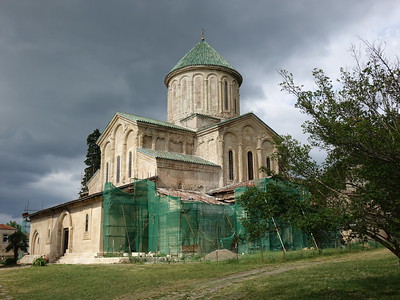
Gelati Monastery is a medieval Orthodox monastery that is considered the masterpiece of the architecture of the “Golden Age” of Georgia.
The architecture is characterized by large blocks and the use of blind arches. In the monastery and its churches, great numbers of medieval mosaics, murals and manuscripts have been preserved. The complex was also one of the country’s main cultural and educational centers.
Community Perspective: the earlier reviews still mention the Bagrati Cathedral, with which Gelati shared its inscription until the former was delisted in 2017. Els did the most recent comprehensive review of a visit to the Gelati Monastery from Kutaisi.
Ha Long Bay – Cat Ba Archipelago
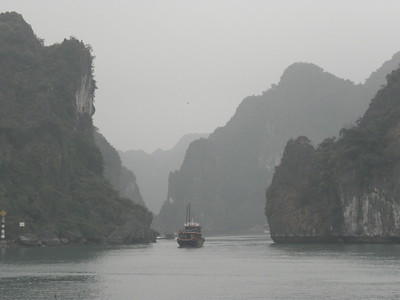
The Ha Long Bay - Cat Ba Archipelago shows all stages of sea-inundation of tropical karst.
Ha Long Bay is the best example of marine invaded tower karst in the world. There are 138 marine lakes present in Ha Long Bay – Cat Ba, about one-third of the global number. The islands hold caves and grottoes, with stalactites and stalagmites. The limestone pillars are a unique natural feature of great scenic beauty and biological interest.
Community Perspective: Best visited on a boat tour (can be one day or multiple days, starting from Hanoi). The scenery is beautiful, but don’t be surprised by the pollution (although this seems to have improved in recent years) and the overtourism you will encounter. You need to be lucky with the weather as well, as it is often foggy.
Jelling
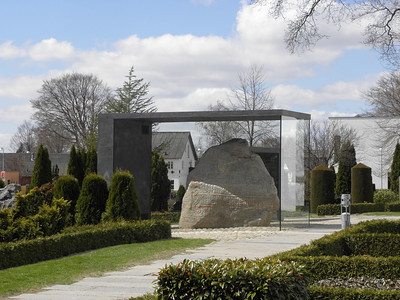
Jelling Mounds, Runic Stones and Church comprise outstanding examples of the pagan Nordic culture and its transition into Christianity.
The archeological site consists of two pagan royal burial mounds and two stones with runic inscriptions in between them. The large runic stone commemorates the unity of Denmark and the conversion to Christianity by Harald Bluetooth around the year 965. He also built the first wooden church on site, which has since been replaced by the current stone one.
Community Perspective: “one of those places whose significance is perhaps greater and more interesting than the site itself might indicate”. You can be done here in less than half an hour, but Clyde recommends re-visiting at night as the engravings are better visible then. The free on-site museum gets favourable opinions as well.
Los Katios National Park
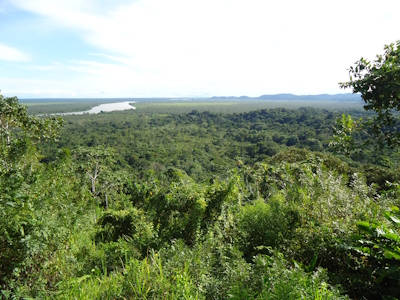
Los Katíos National Park is renowned for its high biodiversity and high regional endemism.
Because of its location on the Darien isthmus, it filtered the interchange of flora and fauna between North and South America. The park comprises the mountains of the Serranía del Darién and the floodplain of the Atrato River, with lowland swamp forests such as the Ciénagas de Tumaradó. Notable fauna species found in Los Katios include the giant anteater, tapir, jaguar, spectacled caiman and American manatee. More than 450 species of birds have been recorded.
Community Perspective: The park is officially closed to the public (source: IUCN Outlook 2020), but you can view it from the Atrato River by taking a boat from Turbo to Riosucio which crosses the core zone.
Mountain Resort, Chengde
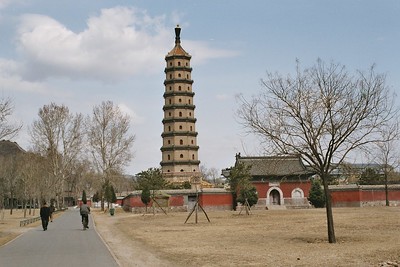
The Mountain Resort and its Outlying Temples, Chengde, comprise a designed landscape that served as the summer resort of the Qing emperors.
At the end of the 17th century, the Qing emperors created a summer residence, exploiting mountains, woods and other existing natural features to which they added contrived landscapes to make settings for innumerable pavilions, palaces and temples. Some temples outside the palace walls were built in the architectural styles of the ethnic minorities, affirming China as a unitary multi-ethnic state.
Community Perspective: The site consists of extensive gardens and outlying temples, and needs at least a full day. Don’t come here in winter! It’s a controversial site as well, as detailed by Solivagant.
Mtskheta
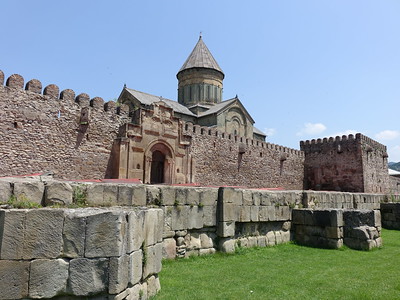
The Historical Monuments of Mtskheta are medieval religious buildings that express the introduction and diffusion of Christianity to the Caucasus region.
Here Georgians accepted Christianity in 317 and Mtskheta still remains the headquarters of the Georgian Orthodox and Apostolic Church. The three included monuments are the Jvari Monastery: a sixth-century Georgian Orthodox monastery, Svetitstkhoveli Cathedral: the principal Georgian church and seat of the archbishop, and Samtavro Monastery: an 11th-century church and nunnery.
Community Perspective: all three are easily reached as they are just outside Tbilisi city limits, although Jvari requires an additional short taxi ride. They will give you a glimpse into the mysterious world of the Georgian Orthodox Church.
Nasca Lines
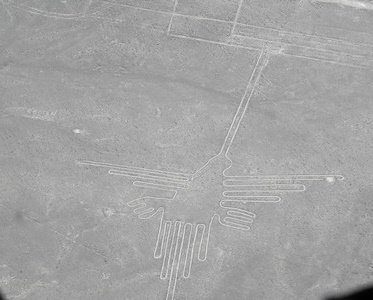
The Lines and Geoglyphs of Nasca and Palpa are the most outstanding geoglyphs in the world due to their size, number, diversity and long period of development.
The lines, located in the arid coastal plain of Peru, testify to the magical-religious world of the ancient pre-Hispanic societies. The hundreds of individual figures range in complexity from simple lines to stylized hummingbirds, spiders, monkeys, fish, sharks, orcas, llamas, and lizards. Many have been superimposed on older ones, with erasures and overwritings complicating their interpretation.
Community Perspective: “One of the few truly unique sights in the world”. The reviewers seem mostly overcome with the experience of the nauseating scenic flight that they had to take to view these geoglyphs. Timonator tried out the new observation tower.
Petäjävesi Old Church
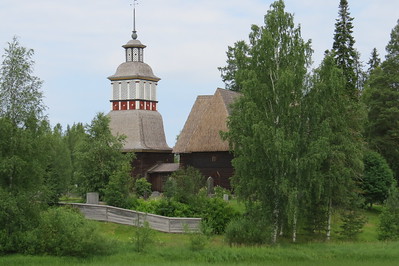
Petäjävesi Old Church exemplifies the long tradition of wooden church architecture in Scandinavia.
It was built entirely of pine wood by a local master in 1763 and the interior holds elaborately carved elements by local craftsmen. The design was influenced by European architectural trends such as Renaissance and Gothic, which were combined with the vernacular technique of log jointing. The bell tower was added in 1821.
Community Perspective: a wonderful small work of vernacular art in a fitting natural environment. Don’t miss the interior with its wooden pulpit and somewhat eccentric carvings. It is still an active church but has regular opening hours for tourists.
Pilgrimage Church of St. John of Nepomuk
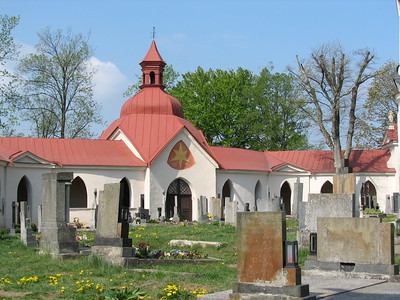
The Pilgrimage Church of St. John of Nepomuk at Zelená Hora is a masterpiece of the Gothic and Baroque architectural traditions.
The church was the first major shrine to St. John (Jan) of Nepomuk, a local martyr who had died in 1393. Already from its beginnings (1727) the church was meant as a place of pilgrimage. It is a highly original work with constant references to the number 5 (the 5 virtues of the saint). The cloister, which encircles the chapel and is based on a ten-point-star ground plan, was completed later.
Community Perspective: It’s “quite impressive for its uniformity”, although the unusual ground plan would be best viewed from the air. The church interior has little decoration except for some stained glass windows.
Popocatepetl monasteries
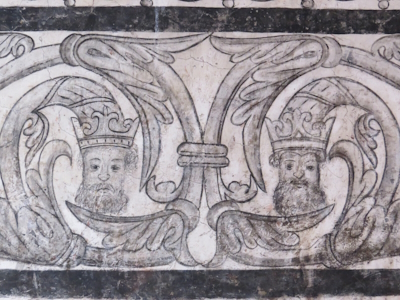
The Earliest 16th-Century Monasteries on the Slopes of Popocatepetl were instrumental to the evangelisation and colonisation of central and northern Mexico.
They were built by the first missionaries of the Franciscan, Dominican and Augustinian orders. They are characterized by their open spaces for worship. Their model was later used to expand to the north via “missions”.
Community Perspective: The ones in Tepotzlan (murals), Huejotzingo (fortified structure), Tlayacapan (huge with many chapels), Yecapixtla (Isabelline interior) and Atlatlahucan (vibrantly coloured murals) are recommended.
Potala Palace
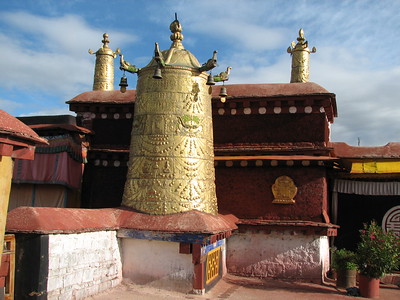
The Historic Ensemble of the Potala Palace, Lhasa, represents the apogee of Tibetan architecture and the combination of religious and secular authority.
The Ensemble includes the Potala Palace and the Norbulingka Summer Palace, which were the administrative, religious and symbolic centers of Tibet's theocratic government for many centuries, and the Jokhang Temple, the most sacred in Tibetan Buddhism. The Potala and Jokhang date back to the 7th century CE.
Community Perspective: The Potala is one of the world’s great iconic sites and nearby Jokhang Temple is also worthwhile for its religious activity. The site is also inextricably linked to the oppression of Tibetan culture by the Chinese, and most of the earlier reviews reflect that.
Quedlinburg
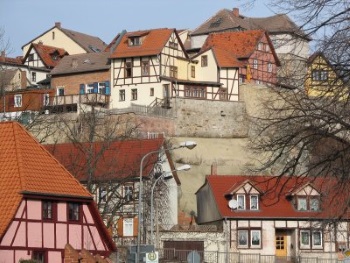
The Collegiate Church, Castle and Old Town of Quedlinburg comprise a medieval townscape with a large number of high-quality timber-framed buildings.
Quedlinburg has been a prosperous trading town since the Middle Ages. Its architectural richness is connected to the Saxonian-Ottonian dynasty of the first German state, for whom this was their capital. Its layout is typical for a medieval town, having started as a castle village and later incorporating other neighbourhoods. The timber-framed houses mainly date from an economic boom between 1620 and 1720.
Community Perspective: The market square, with the Roland statue, and the Church of St. Servatius are its highlights.
Rock Carvings in Tanum
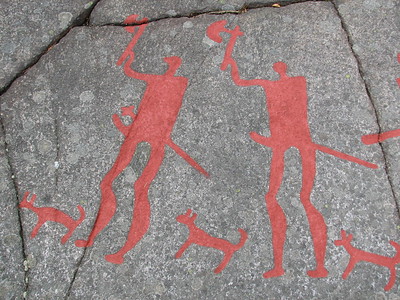
The Rock Carvings in Tanum comprise over 400 groups of varied Bronze Age petroglyphs that depict aspects of local daily life at the time.
They were carved into the rocks at what was the seashore. The motifs include humans, weapons, boats, fishing nets, the sun, bulls, horses, deer, birds and other scenes. A human figure over 2 meters tall carrying a spear possibly represents the God of War Odin.
Community Perspective: The red highlighting used certainly makes them easy to spot, and the ample interpretation panels on site provide good detail. The scale, variety and condition of the carvings are outstanding.
Rwenzori Mountains
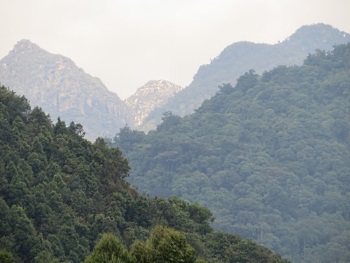
Rwenzori Mountains National Park supports the richest montane flora in Africa.
This mountain range with steep slopes ranges from 1,670m to 5,109m in altitude. Its highest peaks have permanent snow fields and glaciers. It constitutes also a vital water catchment area, sheltering the highest and most permanent sources of the River Nile. Due to high and regular rainfall, the area is home to luxuriant and unusual flora such as giant lobelias.
Community Perspective: the park has two entries for visitors, two main entries: one at Nyakalengija and one near Kilembe. Michael has described what a day visit to the former entails, while Els covered the latter. To see the unusual flora would require a seven-day trek to the higher elevations of the Rwenzori Mountains.
Safranbolu
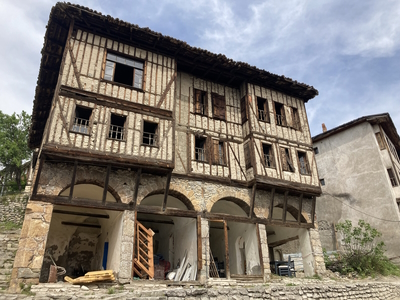
The City of Safranbolu is an example of a typical Ottoman trade town.
It has played a key role in the caravan trade on the main route between Europe and the Orient. The name of the town derives from saffron, since Safranbolu was a trading place and a center for growing saffron. In the Old Town, situated in a deep ravine, many public and domestic buildings have been preserved.
Community Perspective: A nice town worth a couple of hours. It attracts a lot of daytrippers, so be early or stay overnight. Restaurants, guest houses and handicraft shops nowadays occupy the timber frame old buildings. Check out some of the panoramic viewpoints around the city for an overview of the built ensemble.
Skogskyrkogarden

Skogskyrkogården is an early-20th century cemetery known for its landscape and architectural design, that has been globally influential.
Two young Swedish architects won an international architectural competition for their design. The landscape they could use as their raw material consists of pine trees, gravel and small hills. They added several chapels, a crematorium and a large granite cross, but remained sober in the Nordic tradition regarding footpaths or garden features.
Community Perspective: the cemetery lies on the outskirts of Stockholm and is easily reachable by metro. “Surprisingly enjoyable.”
Temple, Mansion and Cemetery of Confucius
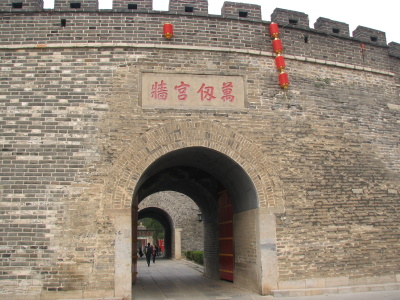
The Temple and Cemetery of Confucius and the Kong Family Mansion in Qufu represent the influence of Confucianism on China and other oriental countries.
The layout and style of the Temple serve as a model for all Confucius temples in Asia. The Cemetery contains Confucius’ tomb and more than 100,000 graves of his descendants, while the Kong Family Mansion was the place where the male direct descendants of Confucius lived and worked. The buildings were strictly designed according to the ideas of Confucianism and built by the finest artists and craftsmen due to the support given by Chinese Emperors.
Community Perspective: A good place if you study Chinese culture or Confucius' philosophy. Mary even stayed overnight in the Kong Family Mansion in 1990.
Vicenza and the Palladian Villas
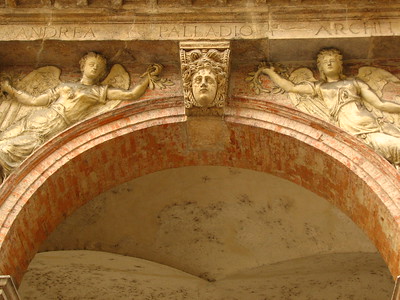
The City of Vicenza and the Palladian Villas of the Veneto represent the Palladian style in architecture, which became influential all over Europe and the United States.
The buildings are the work of the Renaissance master Andrea Palladio. His work was strongly inspired by classical Roman principles. For Vicenza, he developed town houses that fit within the texture of the medieval city, while for the rural areas, he designed more monumental country villas.
Community Perspective: A highlight in Vicenza is the Teatro Olimpico, while La Rotonda is a fine example of a country villa just outside the city borders. Most of the villas have very limited opening hours, except for the beautiful Villa Emo.
Vilnius
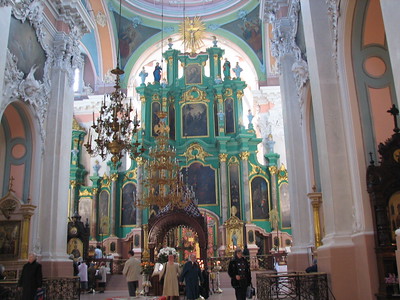
The Vilnius Historic Centre represents a diverse and well-preserved medieval trading town.
The capital city flourished during a time that the Grand Duchy of Lithuania stretched from the Baltic Sea to the Black Sea. It attracted people from within the duchy with different cultures and religions, such as Jews and Crimean Karaites. Its circular town plan is dominated by three castles. The historic buildings are built in the Gothic, Renaissance, Baroque and Classical styles, which influenced developments in Eastern Europe over the next centuries.
Community Perspective: not spectacular in terms of individual sights (although the brick-gothic Church of St.Anne comes recommended), but a great atmosphere and wandering aimlessly around the old town’s cobbled streets is rewarding.
Völklingen Ironworks
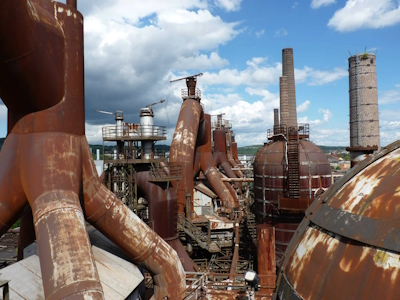
The Völklingen Ironworks represent a modern ironmaking plant from the 19th and 20th centuries.
At Völklingen Ironworks, several important technological innovations in the production of pig-iron were developed or first applied successfully on an industrial scale. The entire process of pig iron production was executed here. Most of the installations, including blast furnaces, coke ovens, and gas-blowing engines, have been authentically preserved.
Community Perspective: It’s fairly pricey (17 EUR in 2023, without a guided tour), but it is fun to explore the site freely and it easily takes 2 hours. Solivagant has lovingly described the site's Blast Furnace.
Wudang Mountains
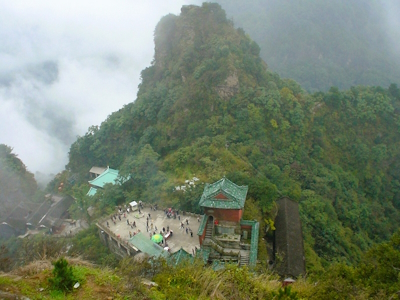
The Ancient Building Complex in the Wudang Mountains is renowned for its many Taoist monasteries and secular buildings which have had a profound influence on Chinese art and architecture.
This Taoist pilgrimage center includes palaces, monasteries, nunneries and temples in a picturesque setting. Most surviving buildings date from the 14th to 16th centuries when Taoism grew in importance due to the support of the emperors of the Ming Dynasty.
Community Perspective: Although the two early reviewers hint at corruption and other issues at the site, Juha found it one of the highlights of his China trip. The costs of a visit add up, with cable car rides and separate entrance fees per temple.
Extended Sites in 1994
Cordoba

The Historic Centre of Cordoba comprises its Mosque-Cathedral and surrounding quarters, a testimony to its blossoming during the Islamic Caliphate of Cordoba.
After 711 CE, Cordoba was turned into a powerful Islamic city that was meant to rival the splendors of Constantinople, Damascus and Baghdad. Mosques, palaces and public buildings were erected. After the Siege of Córdoba in 1236, which was won by the forces of the Christian King of Castile, the Great Mosque was turned into a cathedral and new defensive structures were erected. The Mosque’s design remained influential on Western Islamic art and the 19th-century neo-Moorish style.
Community Perspective: In addition to the former Mosque and its forest of pillars, the Alcazar and its gardens and the Capilla Mudejar de San Bartolome are also amazing. The rest of the historic centre is deemed too overly touristy.
Adrian Lakomy Slovakia - 01-May-05

Visited in summer 2007 and must admire this is my most favorite Andalusian site. Before you visit please read some texts about Cordoba, it will help you to understand a bit.
The city has it very own atmosfere which we could feel as we arrived right before sunset. Visiting then the Gardens of Alcazar gives you a great oportunity to feel like an emir :) (on friday night for free). Walking around night in old jewish city through all those narrow street is a great opportunity to breath the city itself.
Read OnDubrovnik
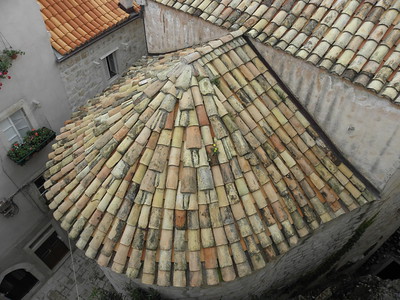
The Old City of Dubrovnik is a late-medieval walled city known for its Gothic, Renaissance and Baroque monuments.
It developed under the name of “Ragusa” in the 14th century as a maritime city-state. In its heydays, during the 15th and 16th centuries, it was a rival of Venice. A devastating earthquake in 1667 destroyed most of its public buildings and ended the city’s prosperity. Dubrovnik’s old city walls are fully intact.
Community Perspective: one of the most beautiful Mediterranean cities, best seen from the walk on its city walls. Few individual buildings stand out, although the Franciscan monastery is recommended for a visit.
Graeme Ramshaw UK/US - 01-May-05

Dubrovnik has many epithets, but none of them prepare you for the sheer perfection of the place. The location, the views, the colours, building materials, everything comes together as a wonderfully brilliant whole. I visited in February, and, while the weather was cold, I was blessed with impeccable sunshine, which is the only way to truly appreciate Dubrovnik's splendour. The town is compact and easy to explore, with the highlights for me being the city walls and the various churches dotted around the centre. For accommodation for the cost-conscious, I highly recommend the private rooms that are marked by the blue "Sobe" signs, very quaint and very affordable.
Read OnGlacier parks
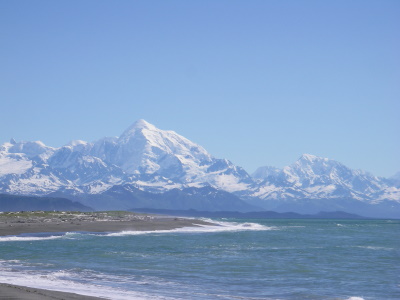
Kluane / Wrangell-St. Elias / Glacier Bay / Tatshenshini-Alsek comprises a mountain landscape shaped by geologic and glacial processes.
These four parks in the Yukon and Alaska offer combined marine, coastal, wild river and high mountain scenery with minimal extent of human modification. They hold over 200 glaciers, including some of the world’s largest and longest. Wildlife is abundant too, with a healthy population of grizzly bears.
Community Perspective: Glacier Bay is regularly visited by large cruise ships and good views are had from there. Tsunami describes an unforgettable journey on smaller boats and small airplanes, while J_neveryes explored Kluane by doing rewarding day hikes from Haines Junction.
Kelly Henry USA - 01-May-05
This must be one of the largest sites in area in the world. Glacier Bay is best seen from a boat. Even the view from a large cruise ship is unforgettable. An echoing rifle shot crack of the glaciers calving warns you of a giant splash and sea otters and whales can be seen from the waters.
Tatshenshini-Alsek doesn't have many roads but is full of wildlife, wide open spaces without even a power line or a road to spoil the view. Wrangell St. Elias has some of the largest mountains in North America as well as a historic abandoned copper mine.
Read OnGondwana Rainforests

The Gondwana Rainforests of Australia are renowned for their geological features and unique record of the evolutionary history of Australian rainforests.
The 41 different parks in Queensland and New South Wales are located on volcanic shields that were created after the breakup of Gondwana. They hold the major remaining areas of rainforest, where many songbird species are present as well as further rare and threatened flora and fauna species.
Community Perspective: Dorrigo National Park (Michael) is an accessible choice among the parks to visit, while Lamington National Park (Clyde) proved to be good for birders.
John booth New Zealand - 01-May-05
This is a scattered site made up of a number of unconnected national parks.
There is a very informative Site Information office in the town of Murwillumbah, with very helpful staff. The town is served by buses travelling between Byron Bay and the Gold Coast, but trains no longer run there. We rented a car for a few days to visit the site.
The salient feature of the site is Mount Warning, named by Captain Cook over three hundred years ago. It sticks out like a thumb in the centre of a huge crater. We hiked though the bush around the base of the mountain. Because the site is sacred to the local Wollumbin people it is not recommended to climb to the top.
Read OnGranada

The Alhambra, Generalife and Albayzín in Granada are exceptional reminders of Moorish Spain and hold the best examples of Nasrid art in their architecture and decorative aspects.
The Alhambra, built during the reign of the Nasrid Dynasty, was a palatine city complete with an irrigation system for the lush and beautiful gardens of the Generalife. The Palacio de Generalife was their summer palace and country estate. The Albayzin is an old residential neighborhood in Granada that has both Moorish and Andalusian influences.
Community Perspective: You can easily spend a whole day at the Alhambra and Generalife alone. From the Mirador de San Nicolas in Albayzin you get spectacular views (best in the afternoon) of the Alhambra complex.
Adrian Lakomy Slovakia - 01-May-05

Site consists from there different places.
Albayzin is a white painted jewish quarter on a steep hill. I really enjoyed walking through those narrow streets and at the end to enjoy the best view on Alhambra from San Nicolas.
Generalife are beautiful gardens on the main castle hill representing eden with a lot of flowers and waster. I enjoyed a small nap on a bench and after waking up I really felt like in eden :)
Alhambra itself is complex of military (Alcazaba) and secular palaces. Most important for visit is Nasrid Palaces with its Mudejar architecture. It has very similar decorations as Alcazar in Seville but somehow nicer.
Read OnUluru
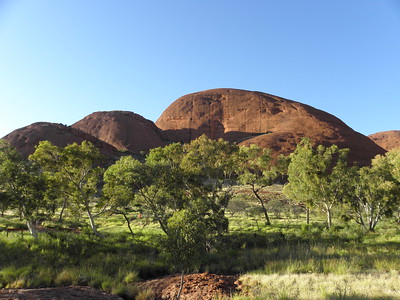
Uluru-Kata Tjuta National Park is a striking physical landscape of two rock formations contrasting sharply with the surrounding sand plains and desert.
The monolith Uluru (Ayers Rock) and the rock domes of Kata Tjuta (Mount Olga) are isolated remnants left after the slow erosion of an original mountain range. It also is an associative landscape via the spiritual relationship of the Aboriginal owners with the land. The area holds numerous sites sacred to the local Anangu people.
Community Perspective: Although popular, this is an expensive destination because you’re confined to the resort town of Yulara and you need a car to get around. Uluru has a magical charm, while Kata Tjuta has good hiking opportunities (Clyde has described a number of them well).
Klaus Freisinger Austria - 01-May-05
The day I was there was cool, rainy, and foggy (and I had thought I was in the desert), but still the mountain exudes a magical charm and is a must-see site. I almost managed to hike around it, but it really was too muddy for that! At least I could understand why people from all over the world make such a fuss about it. Really worth seeing.
Read On